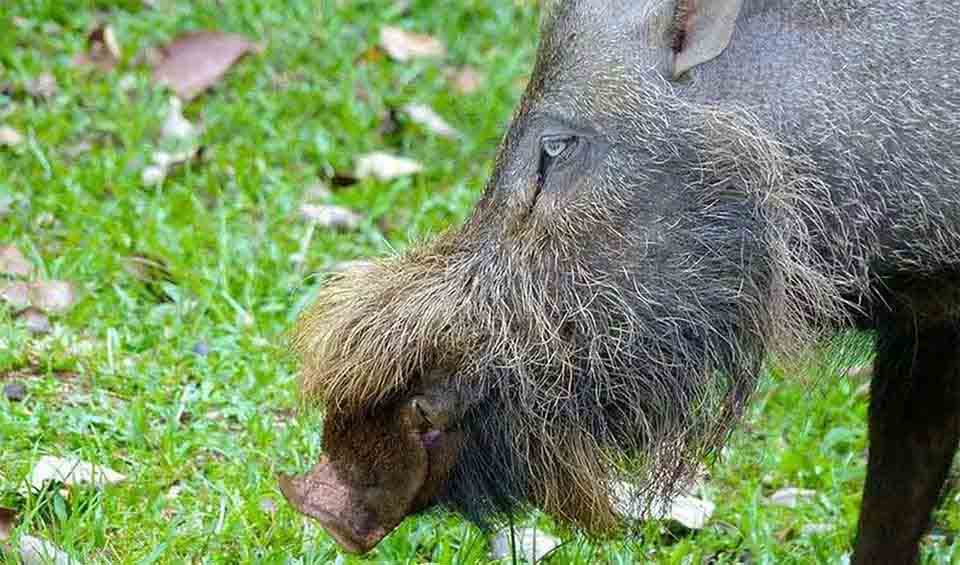A distinctive and ecologically significant species endemic to the Philippine archipelago, particularly the Palawan region, it is an animal of profound biological and cultural relevance. Known for their characteristic facial hair, which gives them their common name, these pigs play crucial roles in their ecosystems, notably in seed dispersal due to their diet, which heavily features fallen fruits, especially during forest-tree fruiting periods. This diet not only highlights their importance in maintaining the health and diversity of their forest habitats but also places them at the center of human-wildlife conflict.
The hunting of the Palawan bearded pig is a practice deeply rooted in local traditions and the subsistence needs of indigenous communities. However, the use of “pig-bombs” or homemade explosives, which cause severe injuries to these animals, is a relatively recent and devastating development. These methods not only inflict cruel wounds on the pigs but also facilitate their tracking by poachers’ dogs, significantly increasing the efficiency and lethality of hunting efforts. Such practices have contributed to the dramatic decline in the Palawan bearded pig population, raising concerns about their long-term viability and the ecological repercussions of their potential extinction.
Despite legal protections afforded by the Philippine Wildlife Protection Bill, enforcement challenges and the continued demand for their meat have led to a rapid decline in their numbers. The designation of the Palawan bearded pig as Vulnerable by the International Union for Conservation of Nature (IUCN) Red List underscores the urgent need for effective conservation measures. The current trajectory of population decline, if not arrested, portends a bleak future for this unique species, threatening not only their survival but also the ecological balance of their habitat.
Distribution
 Philippines
PhilippinesAnything we've missed?
Help us improve this page by suggesting edits. Glory never dies!
Suggest an editGet to know me
Terrestrial / Aquatic
Altricial / Precocial
Polygamous / Monogamous
Dimorphic (size) / Monomorphic
Active: Diurnal / Nocturnal
Social behavior: Solitary / Pack / Herd
Diet: Carnivore / Herbivore / Omnivore / Piscivorous / Insectivore
Migratory: Yes / No
Domesticated: Yes / No
Dangerous: Yes / No




